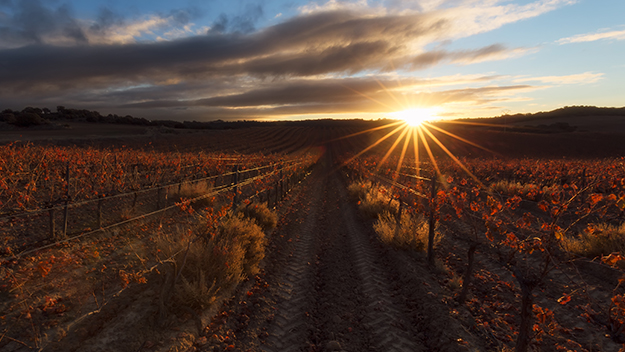Find your winery or vineyard
1 Wineries and Vineyards for sale in Aegean Islands - Cyclades
Infographic of the Denomination of Origin

Change to imperial units (ft2, ac, °F)Change to international units (m2, h, °C)
Cyclades
There are two designations classified as POP (formerly OPAP and OPE): OPAP PAROS, OPAP SANTORINI.
The Cyclades are the most famous and visited Greek islands. The typical image of the Cyclades is that of a pretty seaside village with a cascade of white houses with blue roofs. The archipelago is located in the Aegean Sea and has more than 200 islands. The two stars of Greek tourism are part of the Cyclades archipelago, the elegant Santorini of volcanic origin and the transgressive Mykonos with its fantastic beaches.
OPAP PAROS ΠΆΡΟΣ
This large Greek island in the Aegean Sea, west of Naxos, belongs to the Cyclades islands. Since ancient times there has been a flourishing wine industry. The Roman author Lucius Columella (1st century BC) mentions in his famous work ‘De re rustica’ an important export of wine to Rome via the port of Monemvasia in the Peloponnese.
The vines, as in neighbouring Santorini, are raised in a traditional system known as Kouloura, in the form of crowns resembling birds' nests to protect the grapes growing inside them from the strong sandy winds.
TYPES OF GRAPES
There is a wine with POP in red and white. The red wine is blended with the red variety Mandilaria (66%) and the white variety Monemvasia (33%). It is the only POP red wine in Greece in which a white wine variety can be used. The white wine is produced exclusively in Monemvasia. Two well-known producers are Moraïtis and the winegrowers' cooperative of Paros. There is also viticulture on the neighbouring island of Antiparos.
OPAP SANTORINI ΣΑΝΤΟΡΊΝΗ
It is the southernmost Greek island of the Cyclades islands in the Aegean Sea about 100 km north of Crete. The main island is called Thira and the two smaller islands opposite are ASproinisi and Thirasia. The ring-shaped island was formed by a violent volcanic explosion around 1500 BC that destroyed the Minoan culture (Bronze Age culture on Crete). From the beginning of the 12th century until the end of the 16th century, the island was strongly influenced by Venice, which led to the development of the wine culture. At that time it was called Santorini in honour of Saint Irene. Its speciality was sweet wines with a high alcoholic content and a large storage and transport capacity, which were shipped to Europe via the port of Monemvasia in the Peloponnese. Although the island was conquered by the Turks in 1579, there were no restrictions on viticulture. Ottoman rule lasted until the Greek revolution of 1821.
The summer is hot and dry with almost no rainfall, the winter is mild with little but abundant rainfall. Around 1950, there were still 4,800 ha of vineyards but they are shrinking and today there are about 1,200 ha due to the construction boom.
GRAPE TYPES
Some 30 indigenous grape varieties are grown on volcanic soil. The porous soil has a good water retention capacity. Numerous canavas have been created in the soft material which are used as cellars. The island has not suffered from phylloxera. White wine varieties are grown in 80% of the vineyard. Assyrtiko dominates with 90% followed by Aïdani Aspro and Athiri Aspro. All three are approved for POP wines. The most important red wine varieties are Madilaria, Mavrotragano and Athiri Mavro. The vines are trained at low altitude according to the Kouloura method in a crown shape to protect the grapes growing in the interior from the strong sandy winds. Yields are relatively low and the wines reach high levels of acidity.
There is a white wine classified as POP dry and sweet, blended from Assyrtiko (at least 75%) and Aïdani Aspro and Athiri (maximum 25%). The sweet version called Vinsanto with dry grapes also has a tradition here, this sweet wine probably served as a model for the Italian sweet wine Vin Santo.
Another speciality is the dry white wine Nykteri (night), whose name refers to the grape harvest that does not take place until nightfall and ends in the early morning. It is aged in wooden barrels and stored for several years. The dry wines of the country are called brousko (from the Italian brousco), the white varieties are stored in open vats for a longer time which causes oxidative processes. After pressing, the must ferments to a brown wine with a rustic character.
The best known producers are Antoniou, Argyros, Avantis, Boutari, Gaia, Gavalas, Hatzidakis, Koutsoyiannopoulos Volcan Wines, Roussos, Santo Wines, Domaine Sigalas, Venetsanos and VSV.
Discover more wineries and vineyards for sale in these wine regions in Islands
Subscribe to our mailing list to receive news about wineries and vineyards.








